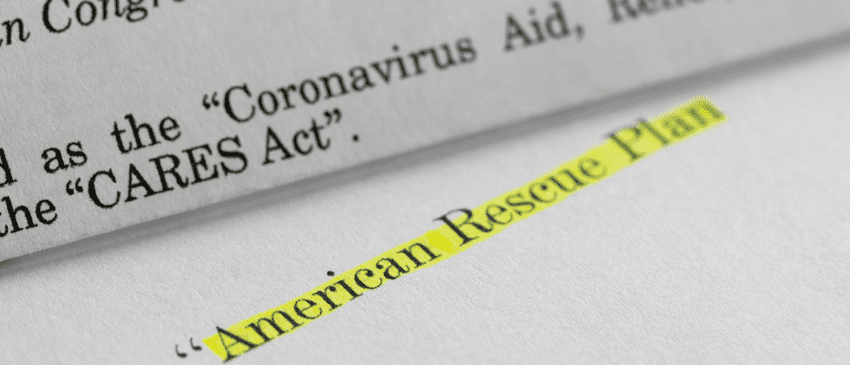Student loans and the CARES Act extension

The original CARES Act, which was signed into law by then-President Donald Trump in March of 2020 was created as a financial relief effort for individuals who were struggling to navigate the uncharted economic waters that were caused by the COVID-19 pandemic. While the initial plan was for the CARES Act to end in October of 2020, it was quickly extended through December of that year. Upon his election to office, President Joe Biden extended the CARES Act as well. The most recent extension is slated to end on May 1, 2022. What does this most recent extension mean for you and your student loans?
This blog has been updated on December 23rd, 2021, in light of the recent extension of the student loan pause.
The CARES Act explained
The CARES Act, which was enacted by Congress and endorsed by President Biden, was intended to provide broad COVID relief to the populace while also acting as a lifeline for student-loan debtors. The CARES Act allows companies to assist their workers who have student loan debt by paying up to $5,250 toward their debts, with the employees not having to pay U.S. federal income taxes on the payments. Despite President Biden’s efforts, student loan forgiveness remains small, and 100% Biden student loan debt cancellation is not on the horizon.
Borrowers must be aware of the debt repayment road ahead as the Biden freeze on student loans expires at the end of April 2022. Here are some of the numerous (temporary) options proposed by the Biden administration to assist debtors in re-entering the loan repayment cycle.
Biden’s recommended remedies for student debt via the CARES Act
During the first six months of repayment, a 90-day grace period has been suggested, with no penalties imposed on debtors who make late payments. Income-verification standards for income-driven repayment plans have been relaxed, and borrowers may apply for refinancing over the phone with their loan servicer to lessen refinancing application backlogs. Borrowers who are behind on their federal student loans will almost certainly be restored immediately.
The chance to get ahead
Obviously, many people were thrilled to receive a deferral of their student loan payments thanks to the CARES Act. However, there was also a provision put in place for people who were able to continue making payments that said that no interest would be owed on the payments. With that policy still in place through the end of April 2022, this is a great opportunity to get ahead through your principal payments, as your monthly student loan bills don’t include interest.
Taking advantage of the CARES Act numbers
Obviously, 0% interest on student loans is a record low. With that in mind, many borrowers are taking advantage of the opportunity to refinance their student loans. Even when student loan payments are mandatory and include interest, many industry experts anticipate that interest levels will continue to be lower than they’ve been in years. With that in mind, consider refinancing your student loan in the face of these record-low interest rates. Doing so can put you in a position to have a much lower monthly payment going forward and is an especially powerful tool for borrowers who are still early in their repayment plan.
Start planning ahead
By the time student loan debts return to their position as a mandatory payment, it will have been nearly two years since those payments were due. Over the course of 24 months, it can be easy to get out of the habit of paying certain bills. At the time of this writing, student loan repayments are slated to begin in around 90 days. That means that you still have time to create a plan about how you will tackle these debts.
There’s still time to get back on your feet
Millions of Americans, including those with student loan debt, found themselves facing financial issues in the face of the Coronavirus pandemic. This most recent extension in the CARES Act, although it is quickly approaching its end, provides another opportunity for you to get back on your feet financially. As many industries and workplaces have started returning to normal, you may be getting back on solid financial ground. Use every available day of the CARES Act’s lifespan to benefit your own financial future.
About Spinwheel
Spinwheel is the leader in debt API development, and thanks to their easy-to-use, low-code drop-in API modules, your developers are off to the races from the get-go. Spinwheel has a strong focus on tackling student loans as well as student loan repayments and dedicates its efforts to assisting borrowers to get out of debt sooner by empowering borrowers to have a happier and healthier relationship with debt. Learn more about Spinwheel here or contact our sales team here.





